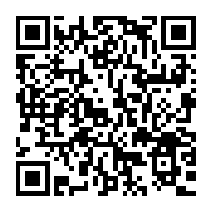Master Ren Shan - What does Beings mean? 眾生是什麼意思
(English subtitles) Master Ren Shan 仁山法師, born in 1980, is a remarkable Buddhist master in China.
Subtitles:
Many people have heard the term 'Beings'. Buddhism says to ferry beings, and there are numerous beings. What does beings mean? Most people can not explain it clearly. Anyway, it's many people, and we are all beings. 'Beings' basically means that a phenomenon arises due to components transforming under some causal circumstances.
Many components come together and cause this phenomenon. This is called beings. So we humans are beings. We don't exist originally. We have this body because of the union of our parents. These are beings. This table is a being. There was no table, someone put together a table from some wood. It's called a being too. So everyone should correct their understanding. Now many people think of beings, people plus ants at most. There are a lot of lives anyway.
So in Buddhism, there are two types of beings: Sentient beings and insentient beings. Sentient beings include humans and animals. All beings with emotions and consciousness are called sentient being. Up to the Bodhisattva of Equal Enlightenment, such as Guanshiyin Bodhisattva(Avalokitesvara), Ksitigarbha, Manjusri, and Samantabhadra Bodhisattva.
2:00
They are all beings, the awakened beings. Down to the sentient beings in the hell, and they are suffering.
Other than that, like I mentioned, tables and stools, mountains and rivers are all beings. They have no emotion or consciousness, but they also arise from transformation of components under causal circumstances. So they are called insentient beings. Thus, the term beings is clearly described.
Therefore, speaking of regulating beings, the Buddha teach both the sentient and insentient beings.
How to teach insentient beings? It's unimaginable. How to teach tables and stools, mountains, rivers and earth? Guide sentient beings well, and all matters will be well too. Because the insentient beings are circumstantial retribution for sentient beings. The circumstances that we rely on to live.
The circumstantial retribution change according to the direct retribution. The direct retribution is the life living here. When the sentient beings here change, the mountains and rivers will change accordingly. That's easy to understand.
Subtitles:
Many people have heard the term 'Beings'. Buddhism says to ferry beings, and there are numerous beings. What does beings mean? Most people can not explain it clearly. Anyway, it's many people, and we are all beings. 'Beings' basically means that a phenomenon arises due to components transforming under some causal circumstances.
Many components come together and cause this phenomenon. This is called beings. So we humans are beings. We don't exist originally. We have this body because of the union of our parents. These are beings. This table is a being. There was no table, someone put together a table from some wood. It's called a being too. So everyone should correct their understanding. Now many people think of beings, people plus ants at most. There are a lot of lives anyway.
So in Buddhism, there are two types of beings: Sentient beings and insentient beings. Sentient beings include humans and animals. All beings with emotions and consciousness are called sentient being. Up to the Bodhisattva of Equal Enlightenment, such as Guanshiyin Bodhisattva(Avalokitesvara), Ksitigarbha, Manjusri, and Samantabhadra Bodhisattva.
2:00
They are all beings, the awakened beings. Down to the sentient beings in the hell, and they are suffering.
Other than that, like I mentioned, tables and stools, mountains and rivers are all beings. They have no emotion or consciousness, but they also arise from transformation of components under causal circumstances. So they are called insentient beings. Thus, the term beings is clearly described.
Therefore, speaking of regulating beings, the Buddha teach both the sentient and insentient beings.
How to teach insentient beings? It's unimaginable. How to teach tables and stools, mountains, rivers and earth? Guide sentient beings well, and all matters will be well too. Because the insentient beings are circumstantial retribution for sentient beings. The circumstances that we rely on to live.
The circumstantial retribution change according to the direct retribution. The direct retribution is the life living here. When the sentient beings here change, the mountains and rivers will change accordingly. That's easy to understand.







